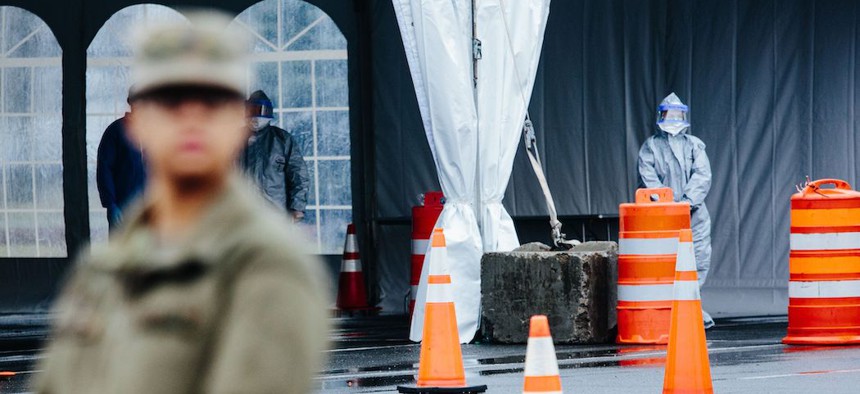New York State
Is Westchester turning a corner on coronavirus?
Fewer coronavirus tests are coming back positive in the county, but it’s still too early to tell if that will continue.

Medical professionals in protective suits wait to take information from people at the drive-through COVID-19 mobile testing center in New Rochelle, New York on March 13, 2020. Alba Vigaray/EPA-EFE/Shutterstock
Westchester County was the site of the state’s earliest coronavirus outbreak. And now, some of the latest data shows the number of people testing positive may be slowing down – though it’s still too early to say whether that trend will continue.
“Although our total number of people tested per day has, in the last three days, averaged about the same, the total number of people testing positive have been down in the last three days,” said Sherlita Amler, Westchester’s health commissioner. But she cautioned against speculating on whether that means the county’s number of cases has plateaued. “It is just a very tiny picture in this event, a very brief amount of time,” she said.
New Rochelle, a city in the southern half of the county, saw some of the greatest number of coronavirus cases early on in the crisis. It was there that the state first began stricter containment efforts, closing down most large gatherings within a one-mile zone in the city. Since then, there have been some preliminary indications that efforts there have successfully slowed down the virus’s infection rate. New Rochelle and other denser, urban parts of Westchester, such as Yonkers and Mount Vernon, have proportionally seen the most cases in the county.
Westchester County Executive George Latimer told City & State he is interested in seeing whether the trend will continue for the next week or so before making any judgements about whether the situation has improved in the county.
One advantage Westchester has had is that it has been testing at a higher rate per capita than any other part of the state, Latimer said. Westchester tested nearly 6,000 people on March 25, for example, more than double the number of tests administered that day in Queens, the latest coronavirus epicenter in New York.
Latimer attributed that to the fact that it was one of the first regions to see COVID-19 cases and, therefore, was targeted for more testing initiatives. The state established its first drive-through testing site in Westchester to allow people to get tested in their cars.
More widespread testing has been a key strategy in more successful containment efforts around the globe. It provides more accurate data about where the virus has spread, which allows governments and hospitals to deploy their resources more effectively. And because COVID-19 can be spread by people who don’t show symptoms, aggressive testing can allow health officials to identify people who should be strictly quarantined.
But even though Westchester has enjoyed more widespread access to testing than other areas of the state, there are still many more residents waiting to find out whether they’ve been infected.
“The demand for additional testing is still great,” Latimer said. “And we still do have a backlog of people that want to test.”

NEXT STORY: Will the state Legislature actually go virtual?